Intake pattern and nutrient supply of lactating sheep selecting dried forage from woody plants and straw offered in binary or multiple choice

Authors:
This study investigated whether offering either binary or multiple choice among low quality
forages has an effect on intake and feeding behaviour compared to no-choice situations
where only one single low-quality forage is offered. Forages from different woody plants and
straw were tested in lactating sheep either in Syria (Exp. 1; Awassi sheep) or in Switzerland
(Exp. 2; East Friesian Dairy sheep). Artemisia herba-alba, Atriplex leucoclada, Haloxylon articulatum,
Noaea mucronata, and Salsola vermiculata were used in Exp. 1. The three most
preferred plants (A. leucoclada, H. articulatum and S. vermiculata) were tested again in Exp.
2 together with Betula pendula, Castanea sativa and Juglans regia. Both experiments started
with a binary choice test where one plant and barley straw were offered separately for 4 h
in the morning to six sheep (test period) in a random sequence in consecutive 7-day subperiods.
A control group (n = 6 per experiment) received only straw in the test period. For
the rest of the day, a basal diet composed of straw ad libitum and concentrate was offered.
After the binary choice test, two 2-week periods followed, where in the first straw only and
in the second all test plants were offered to all animals from both groups to ascertain equal
familiarisation with all plants. For the following 7-day multiple choice test animals were
allocated to two new groups. The ‘multiple choice’ group could choose among all test plants
and straw during the 4-h test period, the ‘control’ group received only the basal diet. Intakes
of test feeds during 4 h and 24 h as well as feeding behaviour during the first 30 min were
recorded. Additionally, nutrient intake was determined. Total daily test feed intake was
always higher in the choice groups, but this was more pronounced in the multiple choice
situation (Exp. 1: 30 and 48, Exp. 2: 49 and 74 g dry matter/kg live-weight0.75 with ‘control’
and ‘multiple choice’, respectively). A. leucoclada (Exp. 1; proportionately 0.73 of total test
plant intake) and B. pendula (Exp. 2; 0.87) were the preferred plants in the multiple choice
test and also with binary choice. Most other feeds were only consumed in low amounts in
the binary and even less in multiple choice situations. In conclusion, giving sheep the choice
among low quality forages seemed to be advantageous. Even though in both experiments
animals preferred especially one plant, choice still facilitated intake.
